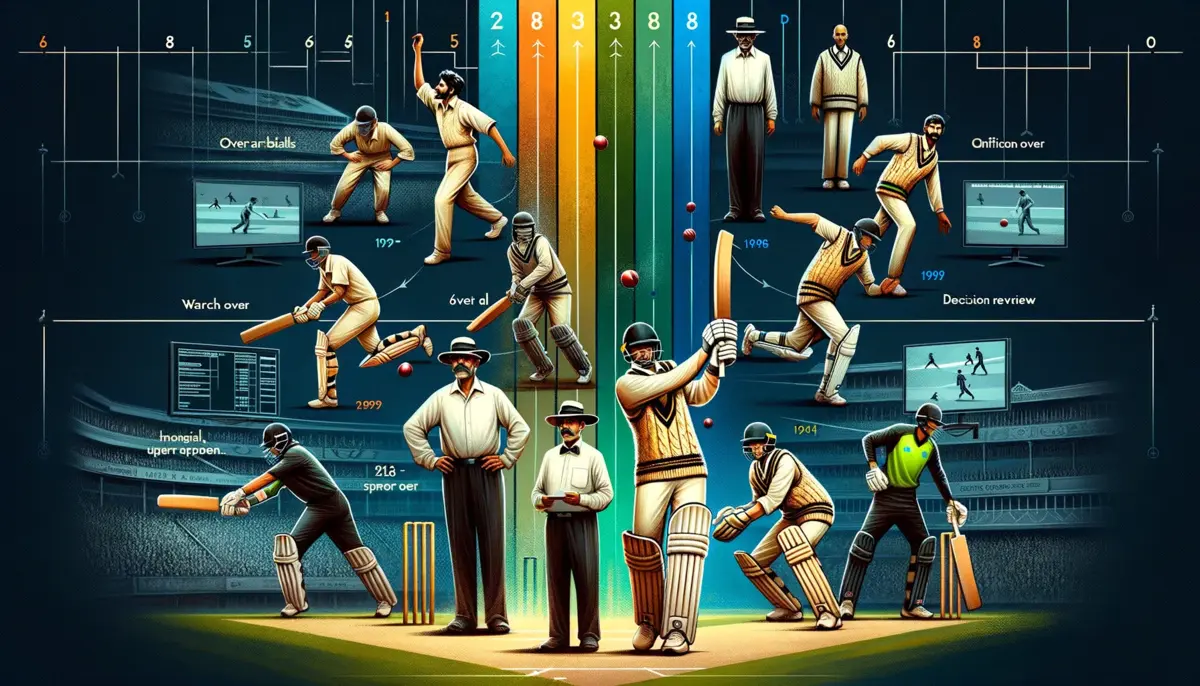Cricket has transformed significantly over the decades, evolving from a traditional, slow-paced sport to a high-intensity game with innovative strategies. From classic Test match techniques to aggressive T20 approaches, cricket has constantly adapted to new challenges. Understanding these changes offers a fascinating glimpse into how the game has become more dynamic and competitive. Let’s explore how cricketing strategies have evolved over the years and their impact on the modern game.
1. The Early Days – Defensive and Patient Approach
In the early days of cricket, especially in Test matches, a defensive style of play was the norm. Batsmen prioritized survival over aggressive stroke play, focusing on long innings and resilience. Matches often stretched for days, with teams valuing wickets more than runs.
Bowlers relied on line-and-length consistency, aiming to wear down batters rather than take quick wickets. Fielding was secondary, with limited athleticism compared to today’s standards.
2. The Rise of Aggressive Batting in ODIs
The introduction of One Day Internationals (ODIs) in the 1970s revolutionized cricket. The 60-over format initially encouraged a mix of traditional Test techniques and controlled aggression.
By the 1990s, power-hitting became prominent, thanks to players like Sachin Tendulkar, Sanath Jayasuriya, and Adam Gilchrist, who redefined opening batting. Teams started focusing on setting high totals instead of merely building slow partnerships.
3. The Impact of Limited-Overs Cricket on Bowling
As batting strategies became more aggressive, bowlers had to adapt new skills to counter them. Swing bowling, yorkers, and variations such as slower deliveries and knuckleballs emerged as game-changers in ODIs and T20s.
Spinners also evolved from traditional containment roles to wicket-taking options. Mystery spinners like Muttiah Muralitharan and Sunil Narine introduced unorthodox styles to keep batters guessing.
4. The T20 Revolution – A New Era of Cricket
The emergence of T20 cricket in the 2000s took aggression to another level. Batsmen began scoring at an unprecedented pace, playing innovative shots such as the switch-hit, ramp, and reverse scoop.
Teams started analyzing data and match-ups, bringing sports analytics into decision-making. Powerplays became crucial, and batting depth extended down the order to maintain relentless pressure on opponents.
5. The Role of Technology and Data Analytics
With the growth of cricket, technology and analytics began playing a crucial role in strategizing. Tools like Hawk-Eye, ball-tracking, and performance analytics helped teams make data-driven decisions.
Players now study opposition weaknesses in detail, using statistics to plan strategies for specific bowlers and batters. The CricBet99 App provides real-time match insights, helping fans and analysts track player performances with precision.
6. Captaincy Strategies and Leadership Changes
Captaincy has evolved significantly from defensive field placements to attacking and flexible tactics. Modern captains like MS Dhoni, Eoin Morgan, and Brendon McCullum have embraced innovative leadership styles, promoting fearless cricket.
Decision-making now involves split-second choices, with captains needing to adapt bowling rotations, powerplay tactics, and batting orders on the go.
7. The Evolution of Fielding Standards
Fielding has undergone a dramatic transformation in modern cricket. Earlier, fielding was considered secondary, but today, teams focus on athleticism, sharp reflexes, and diving stops.
Players like Jonty Rhodes, Ravindra Jadeja, and Glenn Maxwell have set new standards in fielding excellence, making every run and catch crucial in deciding matches.
8. Test Cricket’s Aggressive Makeover
While Test cricket was historically seen as a slow-paced format, the modern game has seen an aggressive shift. Teams now score at a faster rate, with England’s ‘Bazball’ approach under Brendon McCullum redefining how Test matches are played.
Fast bowlers are now more attacking, aiming for quick breakthroughs rather than wearing down batters. Spinners have also adapted by bowling with attacking field settings rather than just defending.
9. The Importance of Fitness and Endurance
Modern cricket demands peak physical fitness. Earlier, fitness was not a major criterion, but today, players undergo intense training, diet plans, and recovery sessions to stay competitive across formats.
Increased fitness levels allow players to maintain higher strike rates, bowl with consistent pace, and field with greater agility throughout long tournaments.
10. The Future of Cricket Strategies
Cricket strategies will continue to evolve as new formats and innovations emerge. Future trends could include:
- More aggressive power-hitting techniques
- Greater use of artificial intelligence in decision-making
- Expansion of franchise cricket leagues
- Further developments in bowling variations and fielding techniques
As cricket continues to grow, platforms like CricBet99 App will remain essential for tracking the latest trends and strategies shaping the sport.
Conclusion
The evolution of cricket strategies has made the game faster, more competitive, and engaging for fans worldwide. From Test cricket’s patience-driven tactics to T20’s explosive innovations, cricket has embraced change to remain exciting. With new technologies, analytics, and fitness advancements, cricket will continue evolving into the future.
Stay updated on all cricketing trends, match insights, and strategic breakdowns with CricBet99 App.








